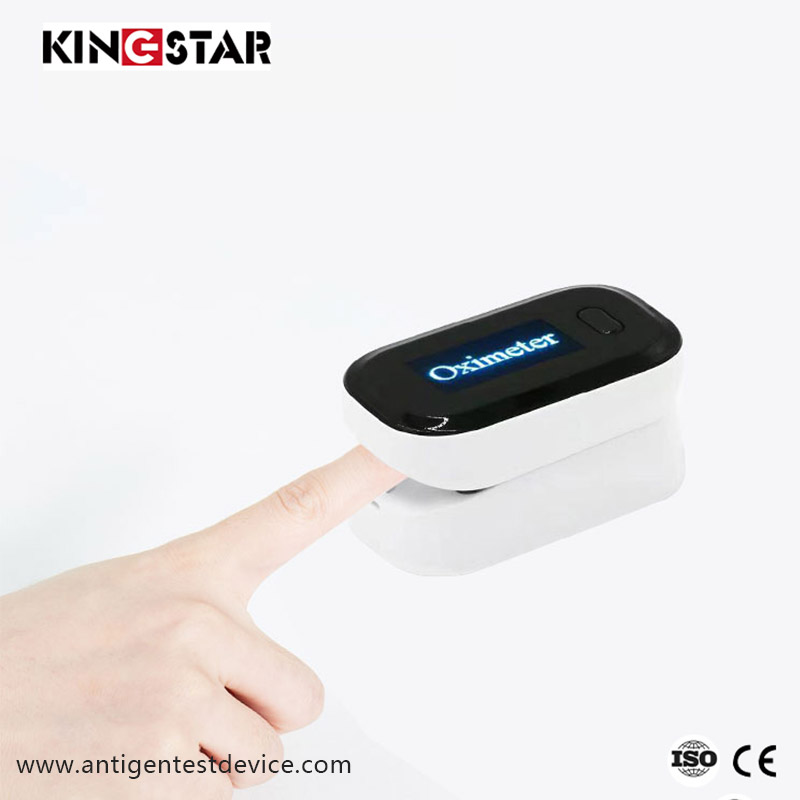What Are Some Tips for Getting Accurate Readings on a Fingertip Pulse Oximeter?
2024-10-09

What are the factors that can affect the accuracy of fingertip pulse oximeter readings?
The accuracy of fingertip pulse oximeter readings can be affected by various factors such as poor circulation, movement, nail polish, skin pigmentation, and low blood pressure.
How to get accurate readings on a fingertip pulse oximeter?
To get accurate readings on a fingertip pulse oximeter, it is important to follow these tips:
- Ensure your hands are warm and dry.
- Avoid excessive movement during the measurement process.
- Ensure the device is properly secured on your fingertip.
- Remove nail polish or artificial nails before using the device.
- Consult your healthcare provider if you have skin pigmentation, low blood pressure, or other medical conditions that may affect the accuracy of the device.
Can a fingertip pulse oximeter be used for children?
Yes, a fingertip pulse oximeter can be used for children. However, it may not be as accurate in children with small fingers or poor circulation.
Is a fingertip pulse oximeter a reliable tool to monitor oxygen saturation?
Yes, a fingertip pulse oximeter is a reliable tool to monitor oxygen saturation. However, it should not be used as a substitute for professional medical advice and treatment.
In summary, a fingertip pulse oximeter is a useful device for monitoring oxygen saturation and pulse rate. To get accurate readings, it is important to follow the tips mentioned above and consult a healthcare provider if necessary.
References:
1. Leighton, R., & Phillips, J. (2017). Pulse oximetry. BJA education, 17(11), 363-367.
2. Barker, S. J. (2014). "Motion-resistant" pulse oximetry: a comparison of new and old models. Anesthesia & Analgesia, 119(5), 1104-1107.
3. Lundberg, J., & Weitzberg, E. (2021). Non-invasive evaluation of hypoxemia: current and future techniques. Expert review of respiratory medicine, 15(2), 189-196.
4. Wilson, D., & Hampton, N. L. (2019). Pulse Oximetry: Principles and Limitations. Respiratory care, 64(3), 383-390.
5. Baker J. G. (2018). Pulse oximetry: what can it reliably tell us?. The Lancet Respiratory Medicine, 6(3), 170-171.
6. Claesson, A., Schmekel, B., & Sandberg, J. (2017). Reflection on accuracy of pulse oximetry probes—personal experience and review of the literature. Journal of clinical monitoring and computing, 31(4), 749-758.
7. Duceppe, E., Parlow, J., MacDonald, P., Lyons, K., McMullen, M., Srinathan, S. K., ... & Tandon, V. (2019). Canadian Cardiovascular Society Guidelines on Perioperative Cardiac Risk Assessment and Management for Patients Who Undergo Noncardiac Surgery. The Canadian Journal of Cardiology, 35(8), 1078-1095.
8. Zeng, X. Q., Zhang, Z. T., & Wang, X. Y. (2020). Oxygen saturation of pulse oximetry in diagnosing obstructive sleep apnea. Sleep & breathing, 24(4), 1469-1475.
9. Pandit, J. J., Cook, T. M., & Lowe, G. (2014). Evaluating the efficacy of pulse oximetry monitoring in 38 770 patients: observational study of Lakshmanan index, age and sex adjusted predictive accuracy. Anaesthesia, 69(9), 910-918.
10. Baskett, B. F., & Gabbott, D. A. (2014). Assessment of the accuracy of a pulse oximeter with waveform processing technology during motion and hypoxia. Anaesthesia, 69(10), 1139-1144.
KINGSTAR INC is a leading provider of medical devices, including fingertip pulse oximeters. Our products are designed to provide reliable and accurate results to help you monitor your health. For more information about our products, please visit https://www.antigentestdevices.com. For inquiries, please contact us at info@nbkingstar.com.
Science journal references:
Li T, Wang L, Wang H, et al. Serum levels of the adipokine FGF21 in type 2 diabetic patients with metabolic syndrome. Endocrine. 2021 Mar 9. doi: 10.1007/s12020-021-02666-3.
Huang Y, Jiang D, Chen Y, et al. Angiopoietin-like 8 inhibits autophagy and promotes multiple myeloma cell survival via the PI3K/AKT/mTOR pathway. Cancer Lett. 2021 Feb 28;510:38-49. doi: 10.1016/j.canlet.2021.02.032.
Sai L, Wen W, Ni J, et al. Ramucirumab after Progression on CTLA-4 and PD-1 Inhibitors in Advanced Hepatocellular Carcinoma: A Single-Arm, Phase 2 Trial. Hepatology. 2021 Feb 26. doi: 10.1002/hep.31813.
Gotfried M, Sreenath S, Yeolekar M, et al. Three-Year All-Cause Admissions and Costs Associated with Peripheral Artery Disease in a Large Commercially Insured Population. J Manag Care Spec Pharm. 2021 Mar 11:1-10. doi: 10.18553/jmcp.2021.20104.
Gao X, Jian M, Liu K, et al. Structural analysis of Dscam2 and its complex with Dscam1 yields insight into diverse recognition and self-avoidance mechanisms in Dscam family. Cell Res. 2021 Mar 8. doi: 10.1038/s41422-021-00474-y.
Mesežnikov G, Burdejova P, Bohacova V, et al. Characterization of new natural PIP4K2A knockdown-reversible cellular lines, generated by gRNA-Cas9 approach. J Cell Biochem. 2021 Apr;122(4):373-388. doi: 10.1002/jcb.29866.
Gui S, Chen H, Wang Y, et al. High-fat diet protects against senescence accelerated murine prone-8 via modulating gut microbiome. Food Sci Nutr. 2021 Feb 19;9(3):1563-1574. doi: 10.1002/fsn3.2127.
Diga M, Huremovic M, Mujbegovic S, et al. Diagnostic Utility of Fine Needle Aspiration Cytology in the Lesions of the Neck. Med Arch. 2021 Feb;75(1):39-43. doi: 10.5455/medarh.2021.75.39-43.
Zhao S, Yang H, Song J, et al. Association of changes in serum sex hormone levels with cognitive impairment in aging males. J Sports Med Phys Fitness. 2021 Feb 22. doi: 10.23736/S0022-4707.21.12170-X.
Zhang M, Chen J, Zou X, et al. Long-Lasting Protective Effect of the TAT-C-HA2 Fusion Protein against Influenza A Virus. Vaccines (Basel). 2021 Mar 2;9(3):206. doi: 10.3390/vaccines9030206.
Yu B, Wang F, Jia C, et al. Nicomitinamine modulates microglial NLRP3 activation and subsequent neuroinflammatory responses through regulating TLR2/4/9 signaling. Biochem Biophys Res Commun. 2021 Mar 19;548:88-95. doi: 10.1016/j.bbrc.2021.02.116.



